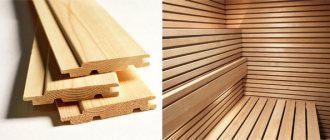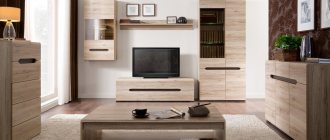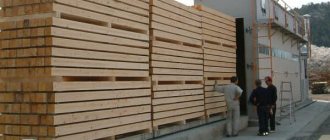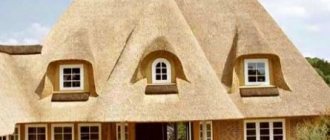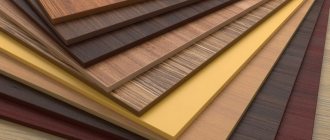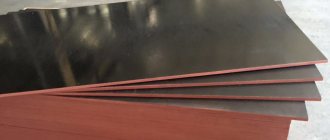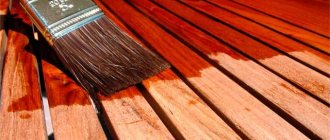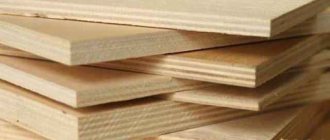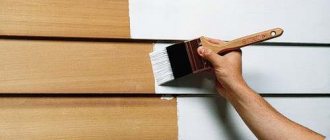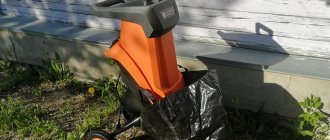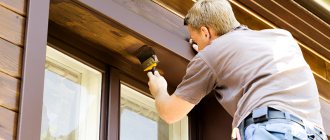The modern market is filled with various sheet construction and finishing materials. Among them, FK plywood stands out due to its characteristics. Thanks to such quality as versatility, it is in demand not only among professional builders, but also among ordinary consumers who decide to make repairs or build their own. This material can be used to cover walls, level floors, or use it to make furniture with your own hands.
So, FC plywood - what kind of material is it? You can find out its characteristics and features by reading this article.
Features of FC plywood
FC plywood - what is it? The abbreviation FC includes the words “plywood” and “urea”. This is a multi-layer moisture-resistant material in the form of square sheets, made from peeled veneer of deciduous or softwood, the layers of which are glued with urea-formaldehyde resins. The fibers on all sheets of veneer used for gluing plywood are located at the same angle.
The production of this building material is carried out in stages. First, the main inner layer is formed and glued, which can be made from solid veneer of any type of wood or be combined. Then it is covered with veneer sheets on both sides, which serve as a finishing cladding. The use of silicate glue in the production of FC plywood slightly reduces its waterproof characteristics, however, plywood sheets of this brand can be used for finishing walls, ceilings, floors indoors, as well as in the manufacture of formwork for strip foundations, and furniture production.
In most cases, birch wood is used to make hardwood FC plywood. It is distinguished by high strength, wear resistance, good environmental properties, decorative texture, and good surface qualities. Due to the characteristics of the source material, FC birch plywood is most in demand compared to other types.
Selection rules
The selection parameters are the water resistance of the material and the emission class - the main difference between the materials.
- For cladding facades or during the construction of outbuildings, only FSF is used. FC is not resistant to water and will quickly become unusable. For external work, you can use material with a high emission class.
- Children's swings, sports facilities, and structures for street advertising are also made from FSF.
- For garden furniture, they use FSF, but with a low emission class, since these items come into contact with human skin.
- For covering the internal walls of residential premises, FC is used. But for the bathroom and kitchen , as it cannot withstand high dampness. For these rooms, FSF with a low emission class is used.
- as the underlay for the floor .
- as a roof lining . There is a high risk of leakage here.
- Furniture for home, office, and shop is made from FC . Containers for transportation are also made from it .
FC is often used for making decor and home crafts, since plywood is easy to saw, cut, and bend.
Which plywood is better to choose for the floor?
Finish floor made of FC plywood, varnished.
First of all, the choice is influenced by the purpose - finishing or rough flooring . The second requires durable and attractive plywood. The leveling substrate must be simple enough to provide stability to the structure.
The selection options are as follows.
- Brand – FC is suitable for dry residential premises. For bathrooms and kitchens, use FSF with an emission class no higher than E1.
- Grade - high grade is not needed for rough flooring, so grade 3 and even grade 4 sheets are used. For finishing flooring, grade 1 or 2 plywood is used.
- Humidity – the floor requires dry wood, with a moisture content of no more than 15%.
- The number of layers is or the thickness of the sheet. The subfloor serves as a stabilizer, so its minimum thickness is 12–18 mm. The finishing flooring can be thinner - 10–12 mm. If plywood is laid in 2 layers, the specified thickness is divided in half.
- Sheet sizes - for small rooms it is better to take the regular format, as it is easier to adjust manually.
On logs On concrete On old boards
It is worth paying attention to the manufacturer.
general characteristics
Wooden plywood is a common material used:
- during construction and finishing works of interiors, roofs, facades and others;
- in experimental and design modeling;
- in packaging production;
- for the needs of various industries, including aviation, mechanical engineering, and railway transport.
These products are layered panels or slabs of varying thicknesses made from wood veneer, pressed and glued together.
Technological properties
The properties of the material and its main characteristics depend on the adhesive composition. The level of moisture resistance of the glue affects the appearance of the sheets. The material is divided into several types:
Selection of veneer for plywood grades.
- FC. The basis is urea glue, which contains additives from formaldehyde resins. This plywood is considered waterproof.
- FSF. For production, phenol-formaldehyde glue is used. As a result, the material becomes moisture resistant and belongs to a high class;
- FBA. This material is non-moisture resistant. To make such sheets, casein glue is used.
Sheets containing free formaldehyde are divided according to the type of existing emission:
- E1. The material contains 10 mg for every 100 g of weight of standard moisture.
- E2. The presence of formaldehyde is allowed for every 100 g of weight, but not more than 30 mg.
Sheet thickness
Since the scope of application of first-grade sheets is very wide, one or another material thickness is better suited for each type of work. There are three types of products according to thickness - it can be thick, medium or thin. With a material thickness of 18 mm or more, it is classified as a thick product; if the sheets are 8-15 mm, then the thickness is average; thin types include products up to 6 mm.
Thin sheets, called aviation or Finnish, are highly durable and flexible. This material has a thickness of 0.4-6 mm. The scope of application of these products is determined by its name. This is the design of aircraft, amateur aircraft modeling. This material is used to make souvenirs, devices and musical instruments.
Let's consider where material with a thickness of 3 mm to 6 mm is used (grades FSF and FK). Plywood 3 mm grade 1 is used for the manufacture of souvenirs and decorative items. Such products are characterized by a high level of flexibility and strength, this is due to the high quality of the products. At the same time, products with a thickness of 3 mm are used somewhat less frequently than 4 mm sheets. This fact is determined by the lower price of the latter.
The thin 3mm material has a high cost, which is offset by the small quantities needed to make each item. In addition, due to high quality, labor productivity increases.
Sanded plywood of medium thickness with the designation 1/1, 1/2 and 1/3 is distinguished by a beautiful texture of the front side and an aesthetic appearance. The products are used for interior decoration, front sides of floors and walls.
Thick, first-class sheets are used less frequently; they can be used in the construction of playgrounds, wall cladding, partitions, in mechanical engineering and furniture production, and in construction for the manufacture of formwork.
How to choose?
When building a house, plywood is most often used, consisting of 3-5 layers of glued veneer. Veneer layers can be arranged in different ways in the sheet material; they are assessed based on the outer layers of the sheet. If the wood fibers are located in the direction of the length of the sheet, then such plywood is called longitudinal. If the fibers are located in the direction of the width of the sheet, then such plywood is considered to be transverse. Longitudinal sheet plywood is used where high flexibility of the sheet is required when performing work. Transverse plywood is used in cases where good rigidity is required, which occurs when this material bends.
Due to the impregnation of the layers with glue, plywood sheets are highly resistant to humidity and water. The most common are several brands.
FC - is a moisture-resistant sheet, the veneer inside of which is impregnated with glue consisting of a mixture of resin and formaldehyde. If plywood has an E1 impregnation class, it means that the degree of release of formaldehyde vapor into the external environment is low, and such material can be used in residential premises.
Finished sheets of pressed plywood are sanded.
There are two types of plywood products.
Sanded - if only one side of the sheet is sanded, then the code Ш1 is added to the nomenclature of the plywood grade. If both sides are sanded, then the product is marked with the code Ш2.
Plywood, sanded on both sides, is used for the production of furniture products. If you are choosing a material for construction work, then it makes no sense to overpay for sanded sheets - you can get by with a cheaper unsanded option.
Plywood sheets are divided into 5 grades. The best grade is marked with the letter E, which denotes elite and high quality products. Then, as they deteriorate, varieties are divided into I, II, III and IV. The grade is determined by the appearance and quality of the front sides of the material. Each side is evaluated separately, and the result in the nomenclature is written using a fraction sign. For example, plywood marked I/II will indicate that one side of this material corresponds to grade I, and the second side of the sheet has only grade II quality.
To correctly determine the amount of material needed for work, you need to make preliminary calculations before purchasing:
- determine the area of the plywood sheet;
- calculate the working surface area;
- divide the area of the working surface by the area of the plywood sheet, rounding the result up to whole numbers upward.
When purchasing material, you need to take a small supply, which will be needed in case of an unforeseen cut.
Experienced specialists recommend taking into account the following important nuances when purchasing plywood material:
determine the purpose of plywood and select the appropriate grade of material for this purpose, and also take into account the composition of the adhesive base; check with the seller what material the plywood sheets are made of - birch and pine wood are considered the most suitable for interior and exterior work; pay attention to the quality of the sheet surface - there should be no chips, bubbles or foreign inclusions on it.
For the manufacture of furniture products, plywood sheets are used, the thickness of which does not exceed 9-10 mm, while for construction purposes they take material with a thickness of at least 12 mm. Finishing work is carried out using sanded plywood of grade E or category I with mandatory sanding of the outer side. For other work, the appropriate class of material is also individually selected and the need for grinding is determined. The cost of a plywood sheet directly depends on its grade, size and thickness. The larger the dimensions of the sheet and its thickness, the more expensive the material is.
Which plywood is better, see below.
Varieties and labeling
There are five grades of plywood.
The highest is E (Elite), and then, as it gets worse, from I to IV. The grade is determined by the condition of the upper - front layers. Moreover, the quality of both surfaces is assessed separately and written through a slash. For example, I/II or III/IV. GOST describes in detail what surface errors are permissible for which grade; there are special tables by which this grade is determined. If at least one parameter is worse than acceptable, the grade is reduced.
Varieties differ in the presence and size of certain defects
Here are the features on the front surface that different types of plywood may have.
- Elite For this brand of plywood, the veneer must be perfect. There may only be minor changes to the wood (no eyes). All. There should be no other shortcomings.
- I grade. There may be knots: pin knots, no more than 3 pieces per square meter;
- healthy, fused, dark and light with a diameter of 15 mm, no more than 10 pieces/m², they may have cracks no more than 0.5 mm wide;
- partially fused, not fused, falling out with a diameter of no more than 6 mm in an amount of no more than 3 pcs/m²;
- Knots: pin knots without restrictions;
- Knots: pin knots without restrictions;
- length no more than 300 mm no more than 2 pieces,
- Knots: pin knots;
- length no more than 300 mm without restrictions;
Correspondence of plywood grade designations according to various standards: GOST 3916.1-96, TU 5512-002-00255214-2000, GOST 10.55-71
If there are defects not listed in GOST, the product is considered substandard. It is also considered substandard if the maximum permissible size of defects is exceeded. Sometimes they try to sell such products as a fourth grade, but this is a re-grade and the price for it should be significantly lower.
By the way, if there are no obvious cracks or fallen knots, the third grade can be used for interior finishing. In certain interiors it looks even more interesting than E or the first, which are simply a flat sheet without any features inherent in wood.
